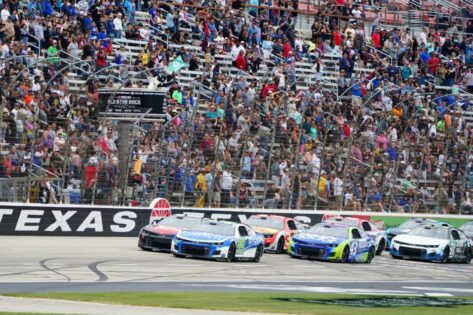Since 2016, NASCAR officially adopted the term NASCAR overtime, an updated version of the long-standing green white checkout finish. The purpose is to ensure races finish under green flag conditions rather than anticlimactic cautions. When a caution occurs during the race’s closing laps, specifically before the white flag lap, the event enters overtime. The field is reset, and it is a two-lap shootout between the race leaders.
NASCAR now allows unlimited overtime attempts until a clean two-lap finish under green is achieved. The rules stipulate that once the leader crosses the start/finish line to take the white flag, the next flag, be it a yellow or checkered one, is taken, and the race immediately ends. That ensures the finish feels legitimate under racing conditions.
As of today’s Brickyard 400 at Indianapolis Motor Speedway, the race has indeed gone into overtime due to a caution in the final laps. With just a few laps left to go, rain and then an on-track incident for NASCAR to display the yellow flag, bringing the race into an unstable extension beyond its planned 160 laps.
Current live updates indicate that the event is now on its second overtime restart attempt following a wreck on the backstretch that triggered another caution before the white flag could be shown. The field has been reset, and tracked conditions, including drying in turn one, have been addressed before green was waved again.
Leading up to the overtime chaos, Bubba Wallace had been out front, followed by Kyle Larson and several others. NASCAR officials continue preparing for the next green flag attempt once the track is declared safe, meaning competitors will again tackle a green flag lap, then the white flag, and finally the checkered flag to determine the winner of the Brickyard 400 in overtime.
This is a developing story.
The post What Are the Overtime Rules in NASCAR? How Does Overtime Restart Work? appeared first on EssentiallySports.



